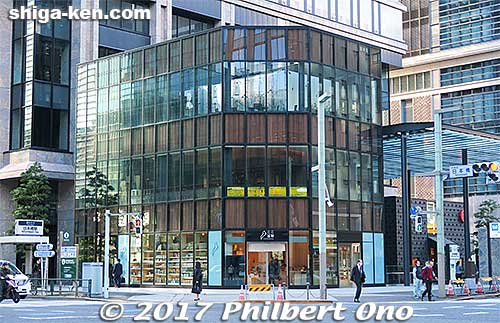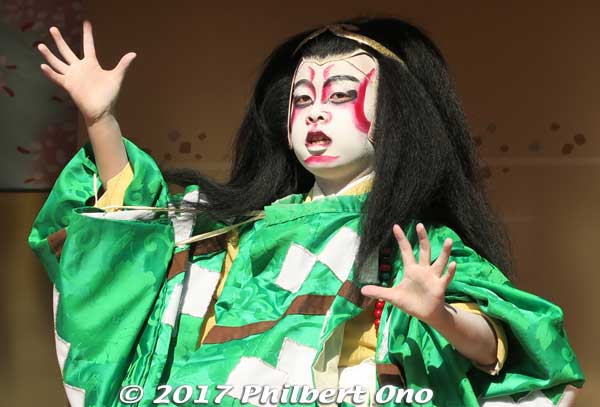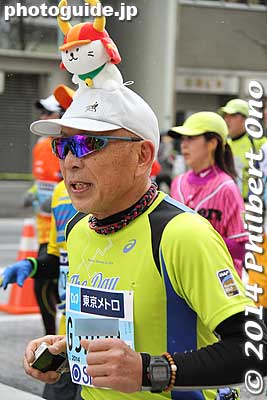
The Tokyo Marathon was held on Feb. 23, 2014. Seeing all the zany costumes is such great entertainment. I spotted this one person carrying Hiko-nyan.
Judging from this marathon, I’m afraid that Hiko-nyan is being overtaken by Kumamon and Funasshi in national popularity. I saw a lot more runners wearing a Kumamon costume than any other character. Perhaps there were more runners from Kumamoto than Shiga, but besides the marathon, lately I’ve been seeing Kumamon merchandise in many places in the Tokyo area. Meanwhile, I’ve seen zero Hiko-nyan merchandise in Tokyo.
Kumamon (くまモン) is an official mascot of Kumamoto Prefecture in Kyushu. Created in 2010 when the Kyushu shinkansen opened, Kumamon is a black bear. “Kuma” comes from “Kumamoto” (熊本) and it means bear, while “mon” means person (者) in their local dialect.
Kumamon got a big break when it won a mascot contest in late 2011. We can now see a variety of Kumamon merchandise. Their marketing and merchandising people are apparently doing an excellent job.
Japan is now saturated with mascot characters everywhere (about 2,000 as of 2014) and it has become much more difficult to stand out or rely on a mascot for PR. Some people are calling it a Yuru-kyara Sengoku Jidai or a warring period between mascots as they jostle for attention. Although I wouldn’t call Facebook a definitive measure of popularity for anything, as of this writing, Hiko-nyan’s official FB page has 47,678 likes while Kumamon’s official FB page has a whopping 156,462 likes.
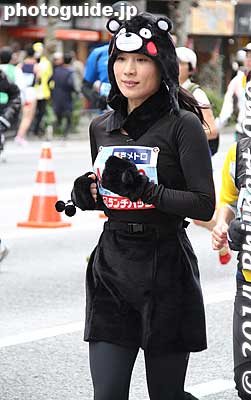
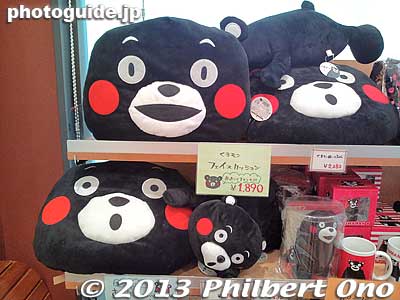
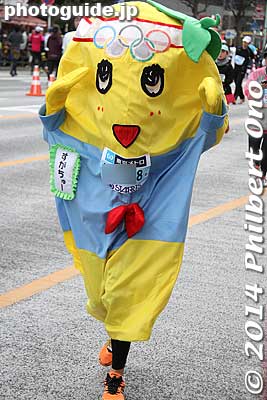
Another nationally popular mascot is Funasshi (ふなっしー) from Funabashi, Chiba Prefecture. The unique thing about Funasshi is its crazy, animated movements. It can dance, flutter its arms almost like a bird, shake its legs, and do quick movements that no other mascot can do. It sets it apart from the others. The costume is quite simple and it looks homemade, but that seems to add to its charm.
Another interesting thing about Funasshi is that it’s not an official mascot. It was created by private citizens and modeled after a pear which is Funabashi’s major product. It’s a “pear fairy.” Pear is called “nashi” in Japanese, hence the suffix “nasshi.”
It got its big break when it appeared in a TV commercial in Feb. 2013. I saw quite a few Funasshi costumes at the marathon. Ironically and foolishly, the governments of Funabashi and Chiba Prefecture have declined to approve of (i.e. purchase) Funasshi as a mascot.
This is another case of local officials not having the foresight to work with local citizens for mutual benefit. It is clear that local governments need all the help they can get from private individuals and should coordinate and work with them more (連携). They should recognize that they can’t do everything and that there are many talented and dedicated individuals out there who can help. If this were Silicon Valley, Funasshi would’ve been snapped up by a large company by now. Such national fame is not easily attainable. I doubt if Funabashi or Chiba Prefecture will ever be able to produce such a popular mascot on their own. Why can’t they recognize a local treasure or gold mine when they see it? Nobody cares about Funabashi’s official mascot.
Funasshi also proves how even one individual can make a big difference. You don’t have to be a large organization or have a big budget. Original and creative ideas, quality and substance, foresight, and content make all the difference.



